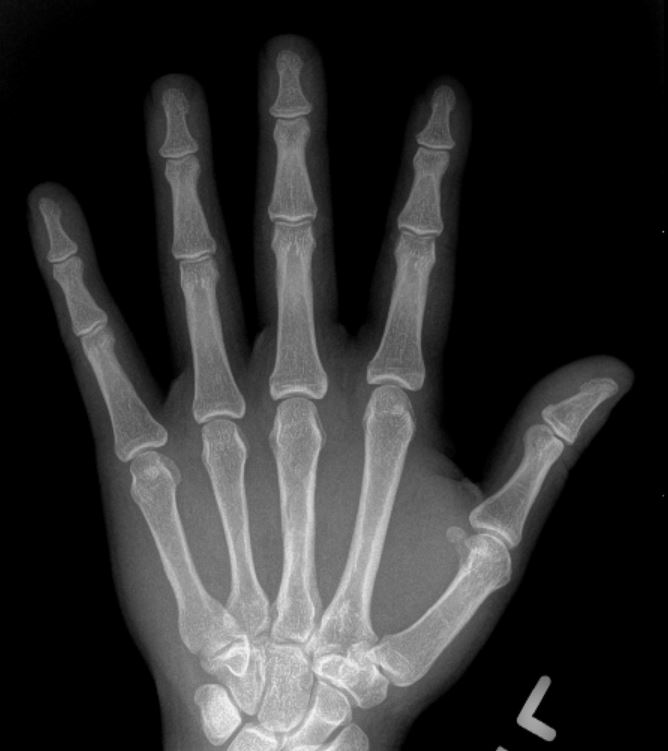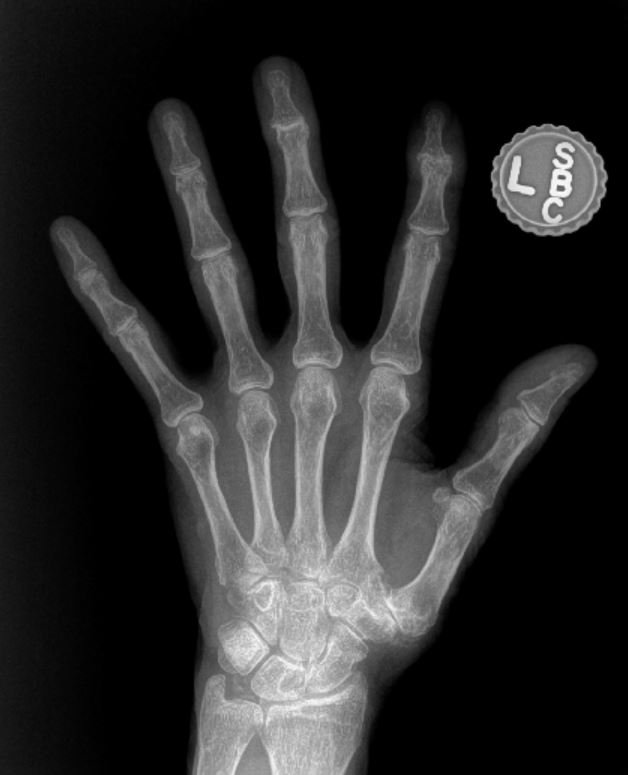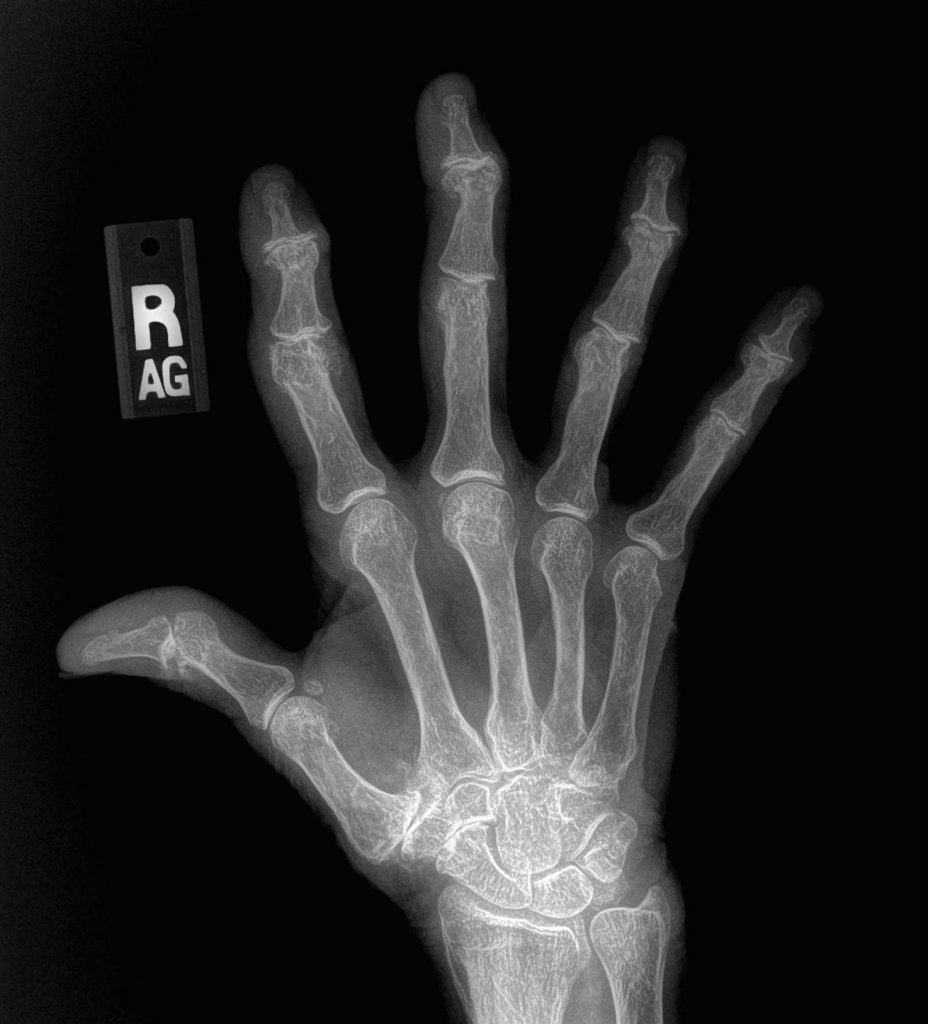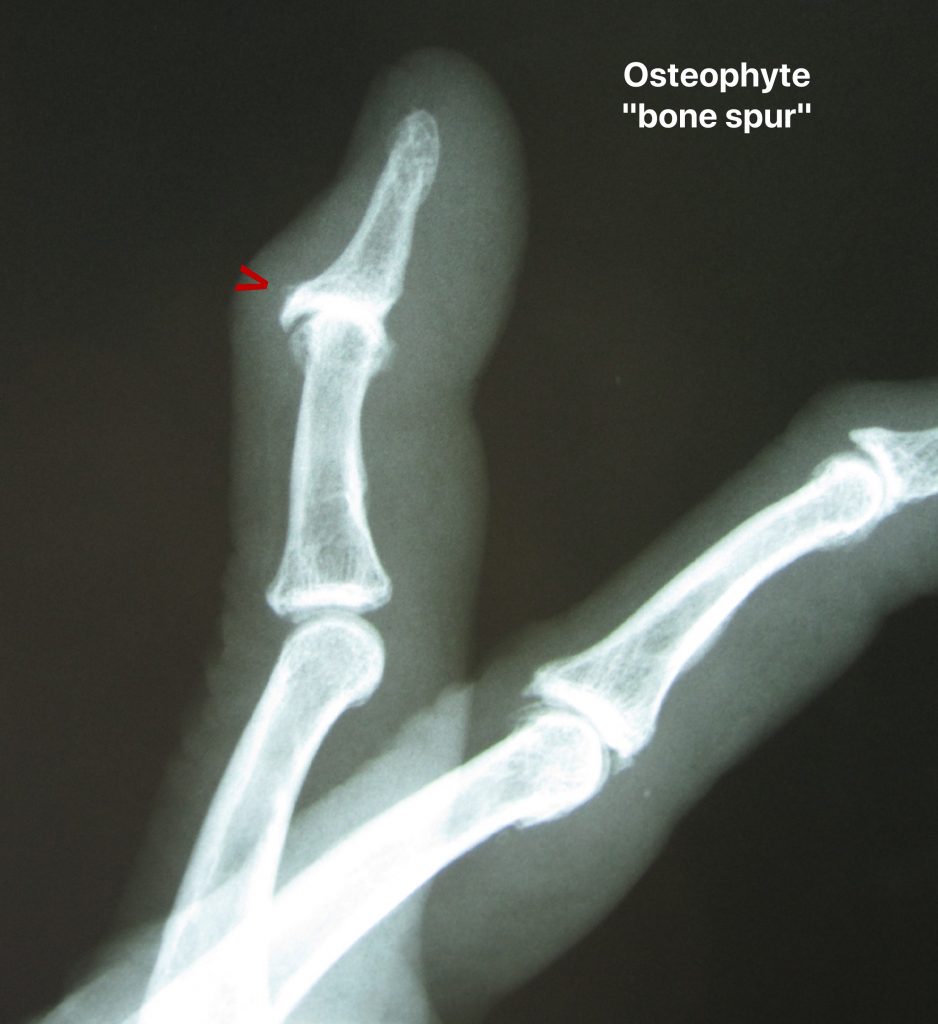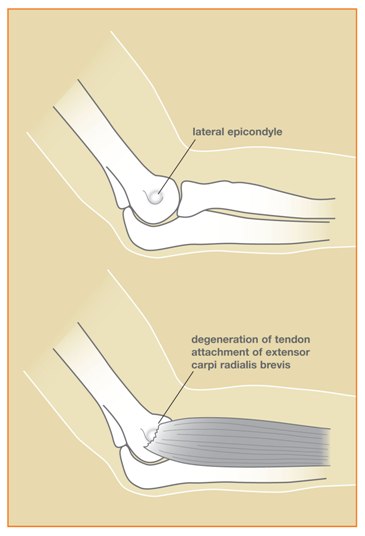Each finger in the hand is made up of 3 phalanges: the proximal phalanx, middle phalanx, and distal phalanx. The thumb has two phalanges. A phalanx fracture, also known as a broken finger, is a common hand injury. They can occur from a variety of injuries such as a fall, a motor vehicle collision, or sports injury. Satisfactory healing of this type of injury is important to restoring the overall hand function. Early diagnosis and treatment is very helpful.
What are the treatment options?
The treatment plan will depend on the severity of the fracture as noted on the x-rays and the patient’s medical condition, activity level, and desires. Most people have fractures which are stable and well-aligned, and, therefore, do not require surgery. Treatment in these cases is typically rest and protection with a splint for a few weeks. Sometimes “buddy-taping” to the uninjured, adjacent finger can be used in stable fractures. Follow-up x-rays are obtained in clinic to evaluate how the fracture is healing. Some fractures can be re-aligned without surgery with numbing medicine, called a “closed reduction” procedure, and those patients can also be treated non-operatively. Therapy is often helpful in improving range of motion and strength after the fracture heals.
Some patients have fractures which are more displaced and the alignment of the fracture is not satisfactory. Depending on the patient’s health and activity level, surgery may be advised to improve and maintain the alignment. A fracture which heals in poor alignment (“crooked”) can significantly affect the patient’s grip strength and hand function. Fractures which injure the joint surface are more prone to complications such as finger stiffness and arthritis.
Raleigh Hand to Shoulder Center doctors can advise you about how best to treat your broken finger.
What is involved with surgery?
The surgery is performed on an outpatient basis using either local anesthesia (injected numbing medicine) or regional anesthesia (nerve block at the shoulder) often with IV sedation. During the surgery, the doctor improves the alignment of the phalanx fracture bone and uses metal implants to stabilize the bones. Fluoroscopic x-rays are used in the operating room to confirm the alignment.
In some cases, we use a small plate and screws to fix the bones internally. The orthopedic hardware is covered by the skin and soft tissues of the finger and rests against the surface of the bone. This is called “open reduction and internal fixation” and requires an incision on the finger. In other cases, we use temporary pins (K-wires) through the skin to hold the fragments aligned while the bone heals. This is called “closed reduction and percutaneous pinning.” The pins can be removed in the office after 3-4 weeks. Which technique is used depends on the fracture pattern and is sometimes determined in the operating room by the surgeon.
Surgery does not really “heal” the fracture; it simply allows the bones to be held in good alignment while the body bridges the fracture site with new bone over a few weeks.
What is the recovery from surgery like?
Your fingers and hand will be protected in a plaster splint after the surgery. Rest and hand elevation is important to reduce swelling. The splint will be removed in clinic after a few days and a removable splint will be provided by our therapists. At this point, most patients can begin gentle wrist and finger range of motion with the oversight of a hand therapist. However, some patients need an additional few weeks of immobilization to protect the repair, depending on the severity of the fracture.
Pain, swelling, and finger stiffness gradually improve over time. Most patients can return to normal function at about 2-3 months post-operatively, but maximum improvement can take several months. Recovery time varies among patients, depending on the severity of the injury, possible complications, and pain tolerance of the patient.
https://blog.handcare.org/blog/2015/08/29/ask-a-doctor-broken-finger/
